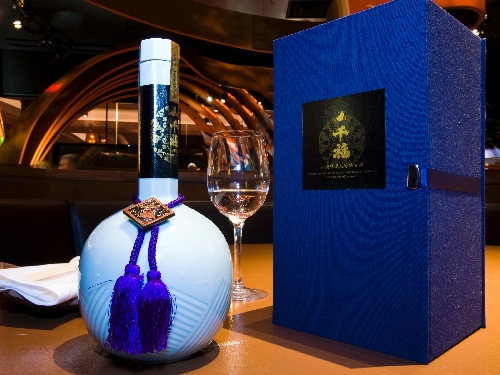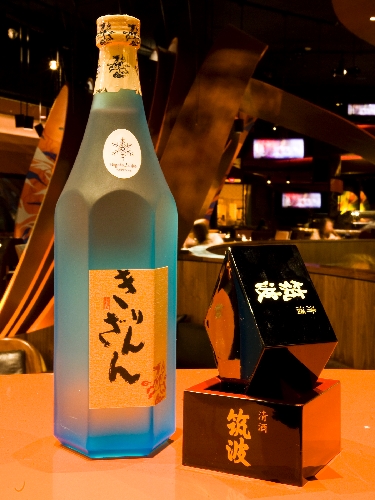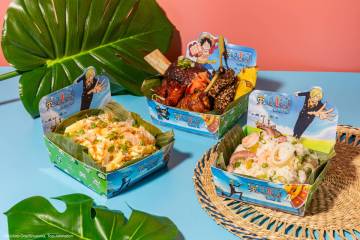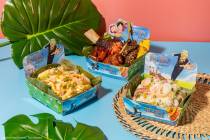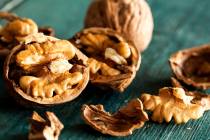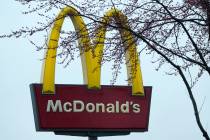Traditional Japanese beverage adapting to American palate
There are a few things about sake that may seem a little confusing. For one thing, sake is brewed.
"The biggest common misconception is that it's a rice wine," said Hayes Swope, a sake sommelier and regional director of operations for Sushisamba at The Shoppes at Palazzo. "It's actually a brewed beverage; it's a lot closer to beer."
Then again, Mike Iwase, certified sake specialist for Southern Wine & Spirits in Las Vegas, makes a parallel to wine. A lot of sake today is tailored for an American clientele, he said; "hence the birth of sparkling sake, flavored sake, a riesling-like sake." Some of these sakes, he said, are "easier to drink," similar to fruit-forward wines.
"I feel that anything wines can do, we can do, and then some," Iwase said.
Then there's the issue of hot -- more properly, warm -- sake. Chilled slightly, Iwase said, all sakes taste very different. "Warm, they all taste mostly the same. People who like warm sake aren't looking for that flavor profile."
But Dieter Xiao, a sake specialist and general manager of Shibuya at the MGM Grand, says that in Japan, warm sake is seeing a resurgence.
"A lot of people think that warm sake is low-quality, and it used to be," he said. "And a lot of it is, but there's also a lot of premium sake that's meant to be served warm. It depends on the brewmaster's desire. You see it on the label sometimes, 'The brewmaster recommends the sake to be served at room temperature' or 'warm.' "
What's not open to opinion, though, is that sake sales here are "skyrocketing," Iwase said, with a substantial increase in the past four years.
"Even in the difficult economic times, we were one of the only divisions that were growing," he said.
There remains a bit of confusion and hesitation about sake, however.
Historically, sake sold in the United States wasn't the type to engender ardent fans, Swope said. During World War II, Japan used much of its rice in its war effort. Brewers, he said, "were just starting to play with the premium sakes," and those were outlawed during the war so rice could be used for jet fuel.
After the war, only futsu -- ordinary, or table sake, which can be made from any type of rice -- was exported, Swope said. And that was generally served warm.
"When you would heat it, it would mask the impurities in the sake and make it tolerable," he said. "And Japan would keep the best stuff for itself. We didn't have the best relationship."
In the postwar years, brewers started creating ever-more-premium sakes, as production started to incorporate industrial advances. Sake grades are based on how much of the rice is polished away, and only sake rice can be used for the premium grades.
"It has a solid center of starch," Swope said. Polishing removes impurities such as fats, amino acids and proteins to get to that starch, the fewer impurities, the smoother the sake.
By law, Swope said, ginjo, or premium sake, has at least 60 percent of the kernel polished away.
"They can polish it all the way to 30 percent remaining and still call it a ginjo if they'd like to," he said. "Technically, you could also call it a daiginjo, which is no less than 50 percent removed."
Special daiginjo is made with rice polished to 40 percent. And before the earthquake and tsunami, Swope said, he obtained some Special Nine, in which 91 percent of the rice had been polished away.
"It's very sad," he said. "It was actually one of the only breweries that was destroyed during the earthquake."
Ironically, the sake boom in the United States mirrors a decrease in sales in Japan, where consumption is at an all-time low. Even before the recent disasters, Iwase said, breweries were closing every year, because while those of older generations still drink sake, their younger counterparts are turning to beverages with more alcohol content, which are tantamount to vodka.
Then again, maybe there's no irony at all in that flip-side. The stronger breweries, Iwase said, are "looking more toward the exports. Exports are what's going to save them."
Some of them, Xiao said -- such as Sho Chiku Bai and Gekkaikan -- are producing sake in this country, originally in California and more recently in Oregon. The domestic market, he said, still represents only about 1.5 percent of the production in Japan.
But whether produced domestically or in Japan, many modern sakes, especially sparkling and/or fruity profiles, are aimed at the American palate.
"It's not something that if I brought it to my dad, he would say it would be sake, or he might laugh at me," Iwase said of the sparklers. But, he said, "it's something that's becoming very popular out there. They're adapting to what is popular in the world."
"Japan is a very traditional country," Xiao said. "Sometimes some of the brewers look at each other and they think 'Really?' "
"They see it as the white zinfandel of sake," he said. But in the same way that white zins might convince a wine novice to move on to more interesting wines, "it's progression. We should support it."
Xiao refers to the sakes served hot -- and yes, hot, not warm -- in some local sushi joints as "lava," because "it just burns all the way through."
But, he said, it's "getting new people introduced to sake. Eventually, they will move to chilled sake."
So if you're a sake newbie, what's the best way to get started?
"Vegas is normally pretty warm, so I definitely suggest they try to avoid the really hot sake in their local sushi place," he said.
"You don't have to spend a fortune. Follow the suggestion of the server and try a glass."
Xiao suggests starting with Hou Hou Shu, sparkling sake that's slightly sweet and "great for an aperitif." It's very light, he said, and pairs well with most foods.
"Start with something like that and slowly go to chilled sake," he said.
Shibuya, Xiao said, offers sake flights, which are arrays of four sakes in 1½-ounce servings. Half-bottles are another possibility, he said, as are carafes.
Swope said Sushisamba has the largest premium sake list on the West Coast. They periodically offer sake-and-sushi classes that focus a lot of information on sake.
"People are becoming more educated on sake," Swope said. "They're realizing that sake isn't just that rubbing-alcohol hot beverage."
He said sakes are so diverse that he can find one suitable for a Malibu bay breeze drinker, a scotch drinker or a lover of sauvignon blanc.
"Sake has become much more versatile," he said.
"They're all very beautiful chilled up to room temperature, every one of them," Iwase said. "And our clientele is starting to realize that."
Contact reporter Heidi Knapp Rinella at hrinella@review journal.com or 702-383-0474.
GET THE FEVER
More than 100 premium sakes will be available for tasting during "Sake Fever," part of the annual UNLVino. It's scheduled from 7 to 10 p.m. Friday at The Mirage, 3400 Las Vegas Blvd. South. Tickets are $75 at the door or $50 in advance (at UNLVTickets.com and some local wine retailers).
Mike Iwase, certified sake specialist for Southern Wine & Spirits in Las Vegas, said before the recent disasters that struck Japan, there was a substantial amount of sake inventory in the United States.
Plus, he said, "a lot of containers had been on the water prior to the earthquake."
What the future holds for the Japanese industry is uncertain.
"Obviously, some breweries were hit, some were not. Some were destroyed; some suffered minor or no damage at all," Iwase said.



